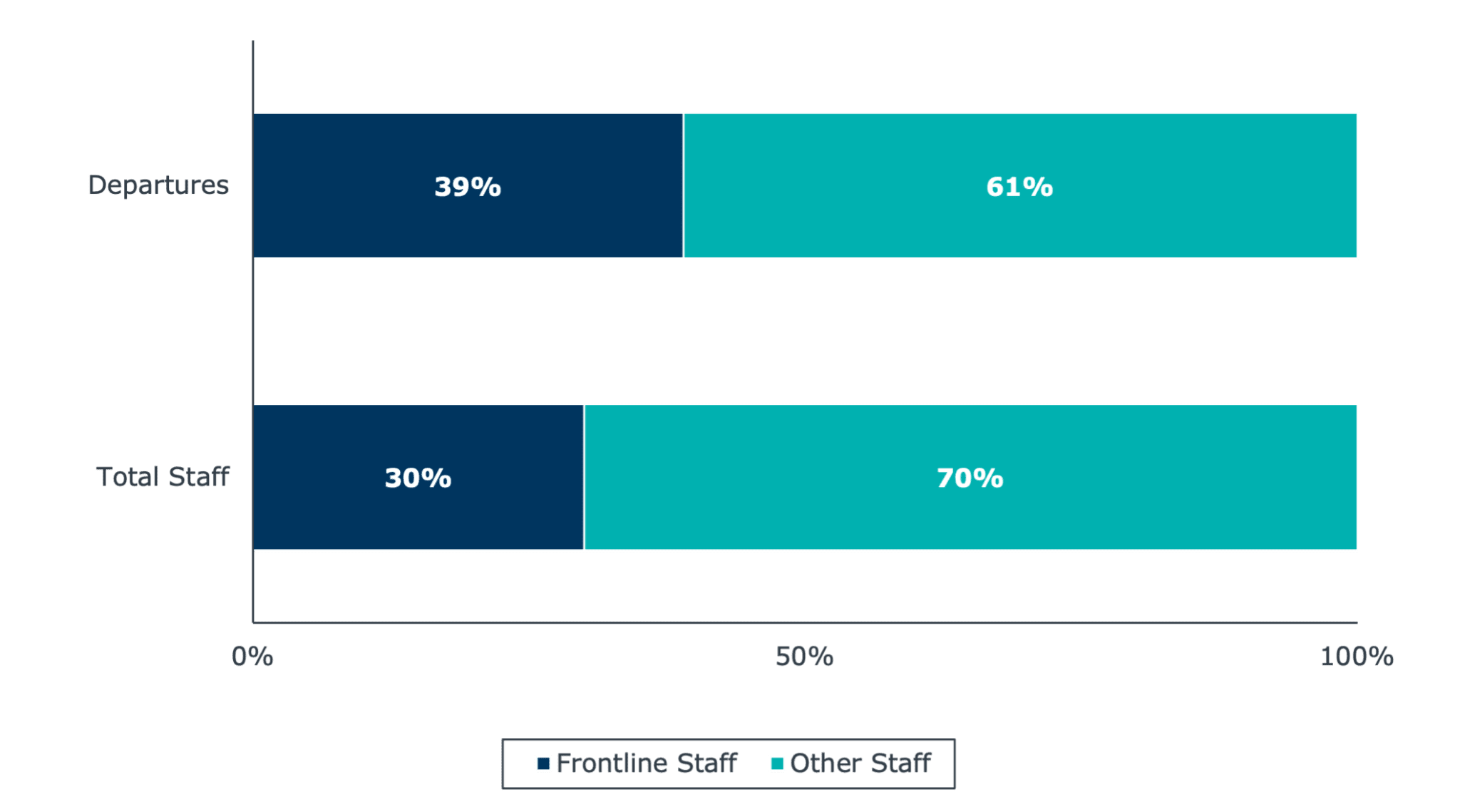EAB survey confirms higher ed advancement talent crisis
In the post-vaccine era, hiring advancement staff is tougher than ever before. Advancement leaders struggle to recruit and retain talent amid the rising inflation and steep competition of the “Great Resignation.” Without a fully staffed shop, chief advancement officers risk not meeting yearly fundraising goals at a time of ever-increasing expectations.
To understand the current talent crisis, EAB conducted a survey of over 120 higher education advancement leaders about their hiring and retention experiences from June 2021 to May 2022. We share our top insights from the survey results below.
1. Help wanted: Higher education advancement vacancy rate reaches 14%
Our analysis found the median vacancy rate among surveyed institutions was 14%. In contrast, the U.S. Bureau of Labor Statistics reported a nationwide vacancy rate of 6.9% for May 2022. At nearly double the overall vacancy rate, higher education advancement remains in dire straits. Whether an institution struggles to meet bare minimum staffing needs or faces growth constraints, vacancies remain open for months. Time to hire sits at a median of 60 days. It’s even longer-90 days-for shops with over 40 FTEs.
Staffing competition is now more acute than ever. Online job postings for advancement professionals in the education sector increased 40% from June 2017 to June 2022, reaching a five-year high of 2,333 unique listings in June 2022. This stands in stark contrast to the five-year low of 455 job postings in July 2020.
Advancement talent market surpasses pre-pandemic high
Unique job postings for advancement positions in education, Lightcast™ Analyst (2017-2022)

2. Fundraisers’ Great Resignation
Among advancement staff, fundraisers are leaving their positions at an outsized rate. While frontline fundraisers constitute 28% of staff at small shops (40 or fewer FTEs) and 30% of staff at large shops (more than 40 FTEs) based on EAB’s Advancement Benchmarking data, they account for 50% and 39% of departures at small and large shops, respectively, from June 2021 to May 2022.
Frontline fundraiser departures exceed advancement staffing proportions
EAB Advancement Talent Pulse Survey (2021-2022) and Advancement Investment and Performance Initiative data (2016-2020)
Small shops

Large shops

Such elevated departure rates concern many industry leaders given fundraisers’ critical role in advancement’s success. AIPI data reveals one additional FTE in major or principal gifts correlates with an additional $1.5 million in fundraising production.
Review our Competency-Based Hiring Toolkit to learn how to recruit transferable skills candidates to major gift officer roles and fill vacancies amid increased competition for fundraisers.
3. Remote work is now standard
Eighty-two percent of advancement shops surveyed now use a remote or hybrid work policy to promote retention. Remote work is no longer a nice-to-have option but a must-offer benefit to remain competitive. According to an April 2022 survey, 66% of gift and alumni officers prefer hybrid work, and 22% more prefer fully remote work.
Remote work promises benefits to advancement beyond retention. Remote work also expands the talent pool advancement shops can draw on in this competitive hiring environment and promotes diversity among fundraiser ranks.
Explore EAB’s Remote Work and Hybrid Workplace Resource Center for tools to navigate the rise of remote work in higher education.
4. Tried-and-true retention techniques are underutilized
Though the pursuit of a higher salary is the number one reason survey participants think higher education advancement staff leave their positions, advancement leaders have yet to take advantage of other fundamental recruitment and retention levers beyond pay and flexible work. Effective options remain for those without the budget flexibility to increase financial compensation.
Only 45% of respondents provide career pathing, even though career pathing is central to employee engagement and retention.
Though employee engagement not only reduces turnover but also increases productivity, only 35% of respondents conduct employee engagement surveys at least annually.
In addition, only 21% of institutions conduct stay interviews, though stay interviews are recommended both to retain specific employees and better understand one’s competitive edge.
To read more about advancement talent management during this time of heightened competition, see our report Sidestepping the Advancement Talent Crisis.
More Blogs

4 ways advancement leaders can make the most of the summer

4 key data trends shaping higher education fundraising
